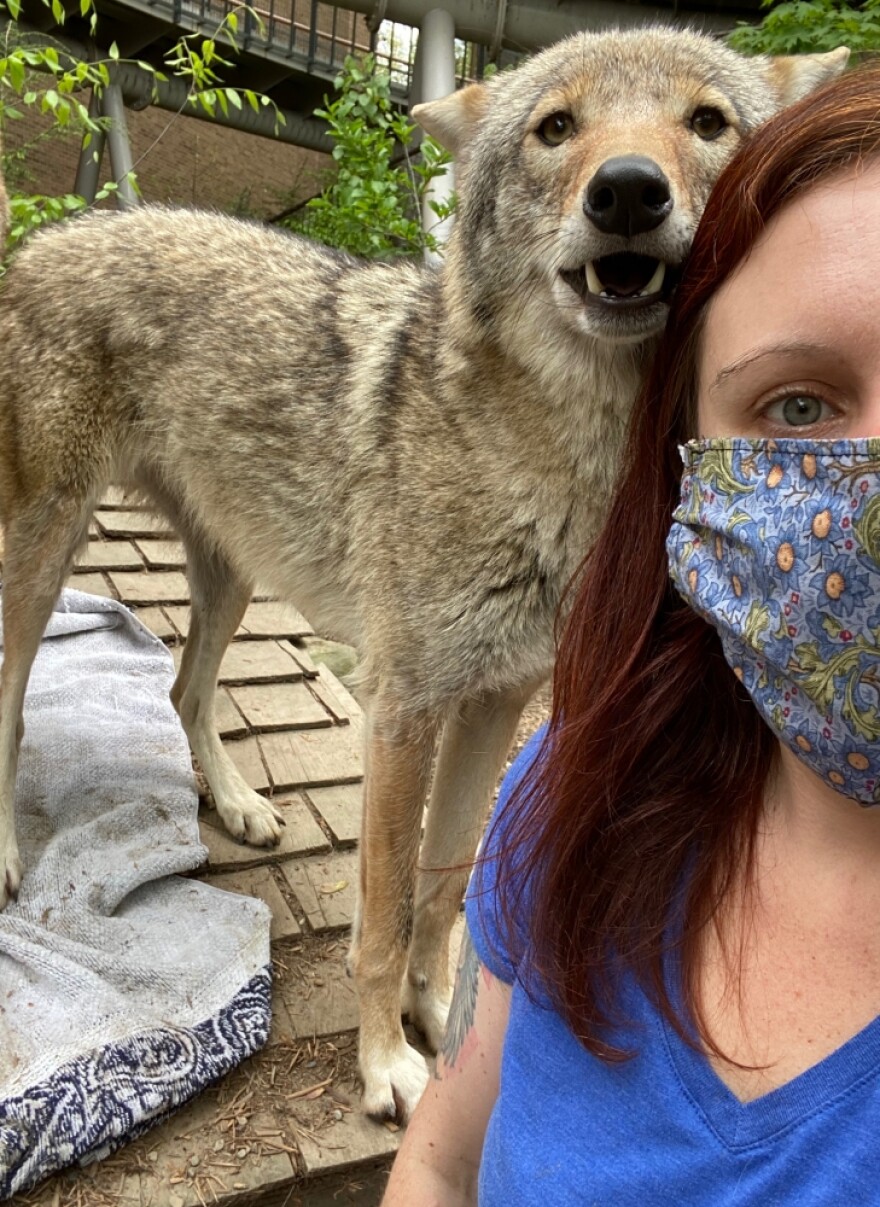The Cleveland Museum of Natural History reopened to the public July 1. Before a government mandate, the museum called for all visitors to wear masks, not only to protect the humans but some of the animals as well.
As chief wildlife officer, Harvey Webster and his team worked onsite, even while closed during the stay-at-home order, to care for the porcupines, skunks, owls and eagles of the museum's Perkins Wildife Center.
They realized some of the animals seemed to miss the museum's patrons.
"Niles the Crane" (Get it? It's a "Fraiser" reference.) awaits visitors at the Cleveland Museum of Natural History [Harvey Webster / CMNH]
“We saw some aggression between our two cranes and we think that maybe it was because there wasn't an audience, in that, oftentimes our male crane will patrol the boundaries of his enclosure as visitors go by and when you had that pause of no visitors then he focused his aggressive energies on Daphne, his enclosure mate, so he had to go to the time-out place,” Webster said.
Meanwhile, reports about lions and tigers coming down with coronavirus at the Bronx Zoo alarmed Webster.
“They all recovered, but they had dry coughs and they had symptoms. So we then had to take a look at our interaction with our animals and find out who in our collection might be susceptible. Well we have cats, bobcats,” he said.
The Natural History Museum mandated its staff to use PPE to protect one another and the animal collection from the virus, including the bobcats and otters, and now visitors must do the same.
Cleveland Museum of Natural History Coordinator of Behavioral Husbandry Alexx Bigham with the otters. [Alexx Bigham / CMNH]
“You sometimes have this opportunity for diseases that aren't necessarily human diseases to jump from one species to another and you have the basis of a pandemic,” Webster said.
For those not interested in wearing a mask or still not ready to venture out, Webster says there's a silver lining.
“This is a great time while you're sheltering at home to start looking around your yard and your neighborhood for signs of the wild creatures which share this part of the world with you,” he said.
Whether wildlife has become bolder during the pandemic or we have more time to look for them, scientists have given this new phenomenon a name - anthropause.
“If we are now in the Anthropocene, this geologic era characterized by the activity of our species on the planet, this was kind of a pause in our activities. So you find animals would sometimes come out during the daytime and be much more visible,” he said.
Cleveland Museum of Natural History Manager of Wildlife Resources Michelle Leighty with coyote. [Michelle Leighty / CMNH]
For example, there are coyotes.
“You could see coyotes in your backyard. As a matter of fact, during this period of time with people sheltering at home and not as much activity out and about we find that some animals around have become more active during the daytime or active at times where we perhaps wouldn't have seen them in the past,” he said.
Webster adds that it's become a boon for people to engage with nature, and he encourages more Northeast Ohioans to do so either in their backyard or at a local park.
“Just highlight the amazing benefits of the natural world... in terms of a blessed distraction from the realities of the pandemic and of how the world was shut down. And finding new things to engage our curiosity, new things to discover and explore. It opens up an entirely new world for people,” he said.
The Cleveland Museum of Natural History is open Wednesday to Sunday through timed-visit reservations.


![Cleveland Museum of Natural History Chief Wildlife Officer Harvey Webster with Bitty the bobcat [Harvey Webster / CMNH]](https://npr.brightspotcdn.com/dims4/default/a2fe7bd/2147483647/strip/true/crop/3000x2250+0+0/resize/880x660!/quality/90/?url=http%3A%2F%2Fnpr-brightspot.s3.amazonaws.com%2Flegacy%2Fuploads%2F2020%2F7%2F09%2FHarvey%20Mask.jpg)



